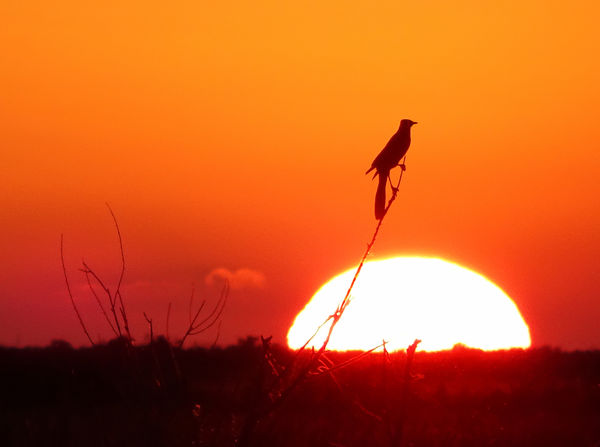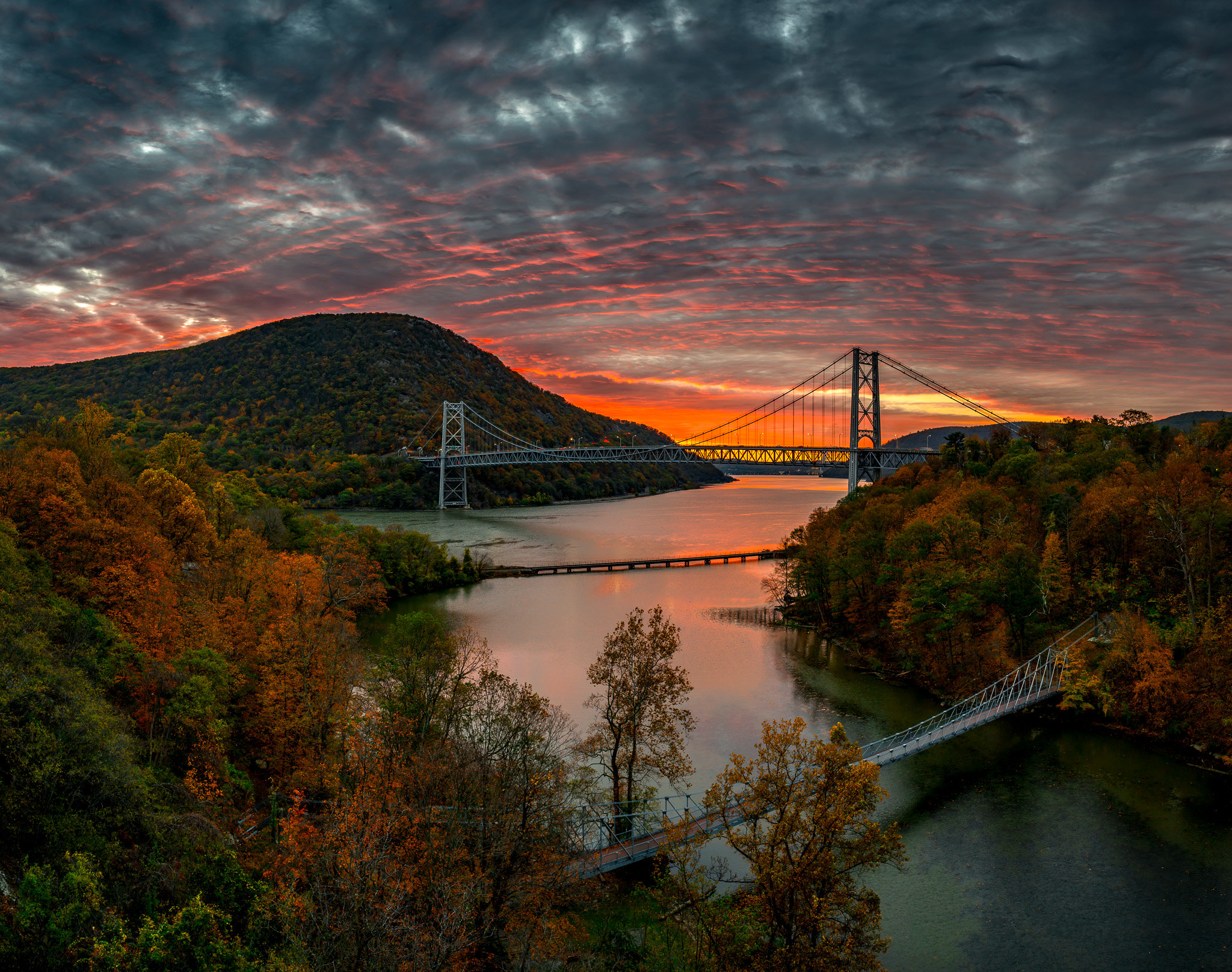TAKING SUN SET AND SUN RISE PIC BEEST SETTING AND FILTERS
Feb 21, 2021 05:29:29 #
Feb 21, 2021 06:51:00 #
Look all around. Pointing your camera at the setting/rising sun isn't always your best bet. Sometimes the show in the opposite direction is better.
Feb 21, 2021 07:06:12 #
tcthome
Loc: NJ
Settings depends on the light. I spot meter on the sky, to the side of the sun & shoot under exposed & raise the shadows in post. As the sun goes up or down , you will need to change your shutter (raise - lower)speed accordingly. You can bracket shoot your photos & combine in post also if desired. Filters= Use a hard grad on the coast or a soft grad for other landscapes but the darker part will usually overlap the mountains/trees, hence the bracket photos in post. If you haven't done it before , it would be better to start with a sunset, get there early & set up your tripod , pick your composition & get your scene in focus. Make sure your camera is in the Manual Mode, & spot metering & manual focus. Set your exposure (Spot meter on the sky to the right or left of the sun). Take a test shot to check your focus & exposure. Watch the camera's light meter as the sun goes down= change your shutter speed(slower as the sun goes down) (faster shutter speed as the sun rises for sunrise). The sun goes down pretty fast when it gets near the horizon. You will want to take photos as the sun goes down & after it drops below the horizon if the sky shows good color. This is how I do it. It is not the only way to do it. I'm sure some people get good sunrise/sunset photos in full auto mode using matrix metering also. I would wait until you have it down before moving to filters. Can use grad filters or an nd or both together for a long exposure which is good for smooth water & moving clouds if desired.
SUNSET
get there early & pick your composition
set up your tripod
put your camera in Manual Mode & use Spot Metering & Manual Focus Mode
take a meter reading on the sky to the right or left of the sun
recompose for your composition & take a test shot
review photo on camera's lcd to check focus & exposure=if all is good
wait for sun to lower & as sun goes down
re-adjust(slow shutter speed) the shutter speed for the light as the sun goes down
check phot on back of the screen
if the sky shows good color, shoot after the sun goes below the horizon
practice, practice, practice, nothing beats experience.
Have fun, Tom
SUNSET
get there early & pick your composition
set up your tripod
put your camera in Manual Mode & use Spot Metering & Manual Focus Mode
take a meter reading on the sky to the right or left of the sun
recompose for your composition & take a test shot
review photo on camera's lcd to check focus & exposure=if all is good
wait for sun to lower & as sun goes down
re-adjust(slow shutter speed) the shutter speed for the light as the sun goes down
check phot on back of the screen
if the sky shows good color, shoot after the sun goes below the horizon
practice, practice, practice, nothing beats experience.
Have fun, Tom
Feb 21, 2021 07:22:27 #
billnikon
Loc: Pennsylvania/Ohio/Florida/Maui/Oregon/Vermont
JOEharbor wrote:
TAKING SUN SET AND SUN RISE PIC BEEST SETTING AND FILTERS
What would you suggest. Joe
What would you suggest. Joe
For meter readings I like to aim my camera 45 degrees to the side of the sunset and then 45% up, take that reading in manual and then shoot your sunset.
The wonderful thing if your own mirrorless is you can adjust your settings and see exactly what you are going to get in the viewfinder BEFORE you shoot, you just aim and adjust until you see exactly the exposure you like, or is you have a DSLR, use the 45 45 thing. Don't forget to add a foreground to add interest.
Good luck and keep on shooting until the end.

Feb 21, 2021 07:40:50 #
Like others here I use the manual mode and spot meter. Never meter the rising-setting sun or your image will be badly underexposed. As has been already stated meter from the side of the sun at the meter reading and then take another shot underexposing by one stop.
If the sun is still too bright avoid looking at it or your eye vision could be damaged.
I do not use filters unless I want to silky smooth the water when shooting a sunset at sea.
If the sun is still too bright avoid looking at it or your eye vision could be damaged.
I do not use filters unless I want to silky smooth the water when shooting a sunset at sea.
Feb 21, 2021 10:34:53 #
dsnoke
Loc: North Georgia, USA
JOEharbor wrote:
TAKING SUN SET AND SUN RISE PIC BEEST SETTING AND FILTERS
What would you suggest. Joe
What would you suggest. Joe
As others have said: it depends on what you're trying to do. I shoot the sunrise frequently and sunset less often. I usually begin with ISO 100, f/8 and whatever shutter speed is appropriate. For example, 40 minutes before sunrise, I might need a 50-60 second exposure. 5 minutes before sunrise, it will be more like 1/50 second. Depends on the light.
Or you can set an aperture and shutter and let the ISO vary. Depends on what you want.
I agree, don't point your camera straight at the sun. That may burn the sensor, particularly in live view.
I find my autofocus is not so good (Nikon D7500) in very low light. So before sunrise I often have to manual focus.
I use filters only to smooth out the water on windy days. That will be a neutral-density filter between 3 and 10 stops, depending on conditions.
Good luck.
Feb 21, 2021 21:07:07 #
JOEharbor wrote:
TAKING SUN SET AND SUN RISE PIC BEEST SETTING AND FILTERS
What would you suggest. Joe
What would you suggest. Joe
I am not being a wise guy, but point your camera wherever you want and take some pics, adjusting settings for different depth of field, exposures, and changing focal lengths or lenses for different composition. Eventually you'll find something you like and you can refine it. There is no such thing as a "best setting". I never use filters.
Sunrise:
 _DSC2139-NIKON D800-3064517-(01-11-17)-Pano-Edit by Gene Lugo, on Flickr
_DSC2139-NIKON D800-3064517-(01-11-17)-Pano-Edit by Gene Lugo, on Flickr _DSC8999-Pano by Gene Lugo, on Flickr
_DSC8999-Pano by Gene Lugo, on FlickrSunset:
 _DSC9719-Pano by Gene Lugo, on Flickr
_DSC9719-Pano by Gene Lugo, on Flickr _DSC4912-Edit by Gene Lugo, on Flickr
_DSC4912-Edit by Gene Lugo, on FlickrFeb 22, 2021 05:27:12 #
Because the dynamic range of sunrises and sunsets is often very high, you will often end up crushing the foreground to saturate the sky or blowing out the sky to get detail in the foreground. If you don't want to use HDR, it is best to expose for the highlights and then post process the image to bring out detail in the dark areas.
Feb 22, 2021 07:35:54 #
Feb 22, 2021 07:38:02 #
Feb 22, 2021 07:38:23 #
Feb 22, 2021 07:39:24 #
Feb 22, 2021 08:10:32 #
Point shoot. Too light? darken, Too dark? lighten. Make sure your shutter is fast enough to prevent shake. Small apertures are usually not necessary with wide angle lenses unless you’re low to the ground and need foreground objects sharp. Adjust in post as desired. It doesn’t need to be any more complicated than that.
Feb 22, 2021 08:15:46 #
Feb 22, 2021 08:23:47 #



--Bob
[quote=Gene51]I am not being a wise guy, but point your camera wherever you want and take some pics, adjusting settings for different depth of field, exposures, and changing focal lengths or lenses for different composition. Eventually you'll find something you like and you can refine it. There is no such thing as a "best setting". I never use filters.
If you want to reply, then register here. Registration is free and your account is created instantly, so you can post right away.





